
Parents teaching you how to tie your shoe is a vivid image in everyone's memory.
What does it mean to tie a shoe? Why does it need to be tied?
What does a shoe need to do to function as a shoe?
If all a shoe need to do is to enclose your foot, how differently can a shoe perform this task?
If, "to tie a shoe" means "to wrap that thing around your foot",
if it can mean more than its literal phrase,
can this mundane action be turned into something more meaningful, versatile or entertaining?
Can "tying a shoe" dictate how a shoe works, or become a shoe itself?
Furthermore, can it alter the user's experience and behavior?
Vice versa, can a user alter a shoe through this channel?
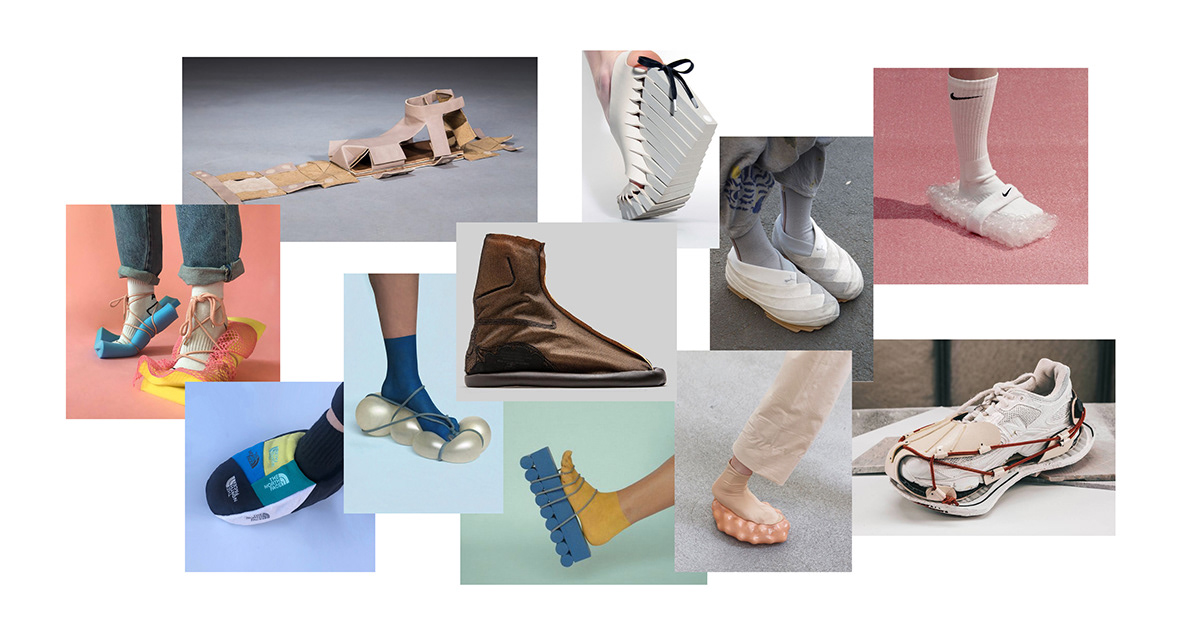
Wacky Pack explores the concept and possibilities of "tying a shoe", by investigating unusual construction and fastening method, creates a unique yet diverse interaction between the shoe and the user, through which to users with a new level of improvisation and customization.

Wacky Pack is also influenced by the Japanese footwear brand Hender Scheme, especially its "Manual Industrial Products" collection, which creates renown sneaker models with manual, traditional shoemaking techniques. It had resulted in my fascination towards veg-tanned leather, and the combination and clashing between traditional leather shoe making and contemporary, unorthodox concepts.
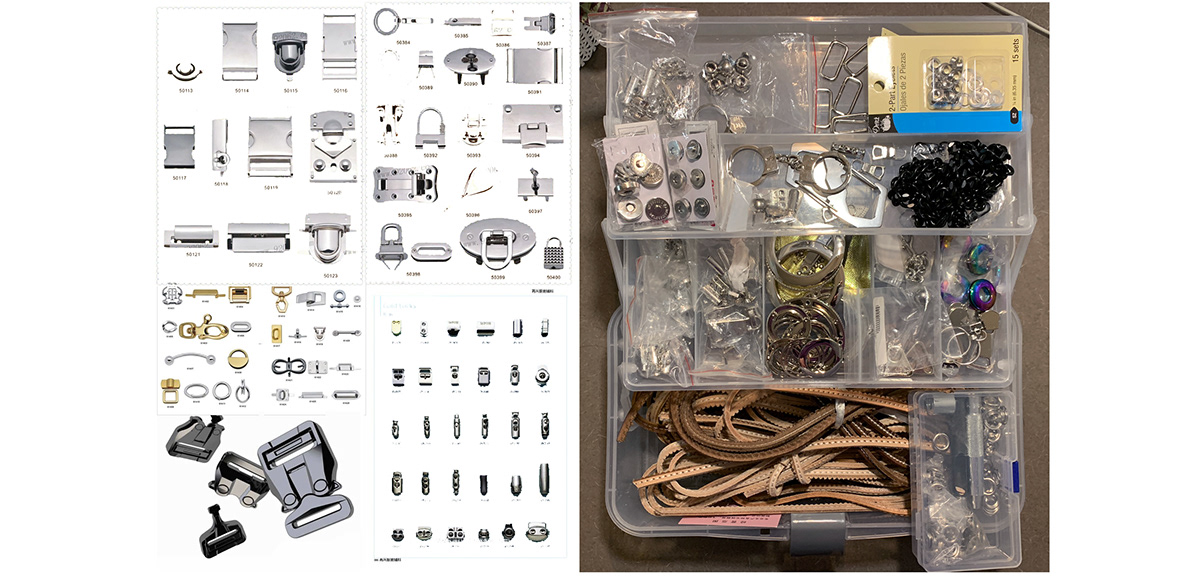
Another fascination of mine is metal hardwares. (right image is my personal collection)
They are heavily industrial made object that fulfills design needs. Because of their rich property: shiny surface, smooth cold feeling, weight that it adds onto the objects, to me they are as strong as the fabric or leather that they complement, or even stronger, even with the power to dictate the piece. Their present will be emphasized in Wacky Pack, since it is an exploration of constructing and fastening.

The Millennials will soon be (if not already) the major contributing consumer of fashion and luxury.
With low brand loyalty and contemporary view of value, they no longer care about the history or the legacy of a brand, neither do they pay attention to materials, whether they spend their dollars on premium leather or plastic.
What they are after is fresh concepts that grab their attention and shock their thoughts. These concepts and ideas that are attached to the garment or the shoe become the value itself. (Do you behave more like a mailman when you wear that DHL shirt? What if your Louis Vuitton bag is made out of neon color plastic instead of leather? Do you pack things differently now that your suitcase is clear?) .
Streetwear and even luxury brands are all playing up to these desires. But with the Millennials’ quick shift of attention, very soon a pure concept won’t attract them anymore, and they would want something more, they would want to be a part of the concept.
With low brand loyalty and contemporary view of value, they no longer care about the history or the legacy of a brand, neither do they pay attention to materials, whether they spend their dollars on premium leather or plastic.
What they are after is fresh concepts that grab their attention and shock their thoughts. These concepts and ideas that are attached to the garment or the shoe become the value itself. (Do you behave more like a mailman when you wear that DHL shirt? What if your Louis Vuitton bag is made out of neon color plastic instead of leather? Do you pack things differently now that your suitcase is clear?) .
Streetwear and even luxury brands are all playing up to these desires. But with the Millennials’ quick shift of attention, very soon a pure concept won’t attract them anymore, and they would want something more, they would want to be a part of the concept.
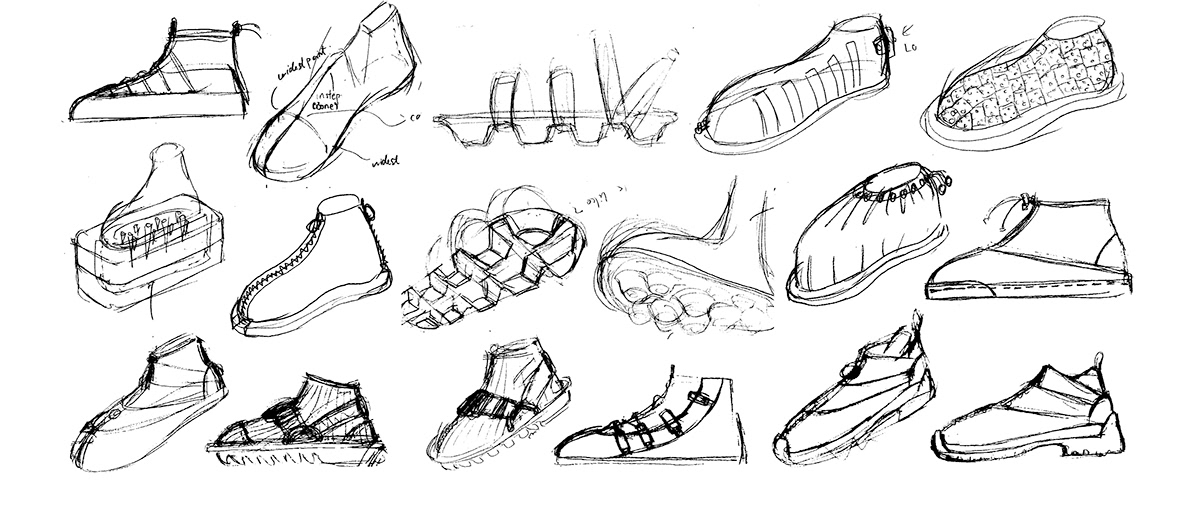
With these inspiration and concepts, Wacky Pack takes forms throughout the spectrum from dress shoes to sneakers.
3 pairs are eventually realized and the other 3 arrived at the stage of detailed drawings and are still in the process of developing.
3 pairs are eventually realized and the other 3 arrived at the stage of detailed drawings and are still in the process of developing.
Bao Bao

shoe born inside a shoe cover,
wear it close, wear it open, wear it flipped.

Patterning
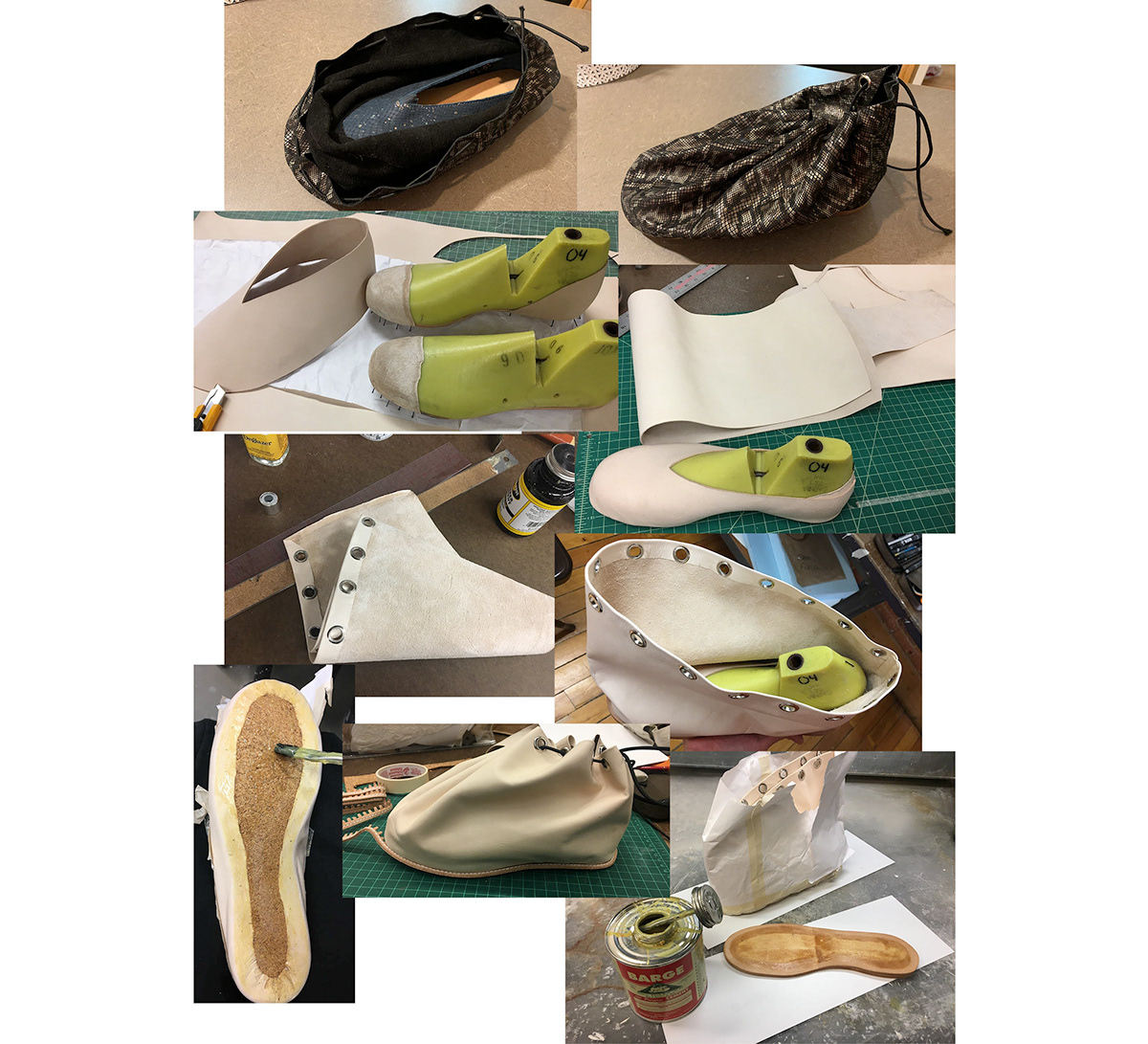
A prototype was made to test out how different thickness of leather enclose, drape and tie together.
The inner shoe employs an unlined structure. 4 oz leather was wet and lasted on top of pined down counter and toe stiffeners. the shoe cover uses 2 oz leather skived thin all over to drape and close more easily.
2 layers of soling leather was used, with the top one sanded into a wedge to blend smoothly to create heel.
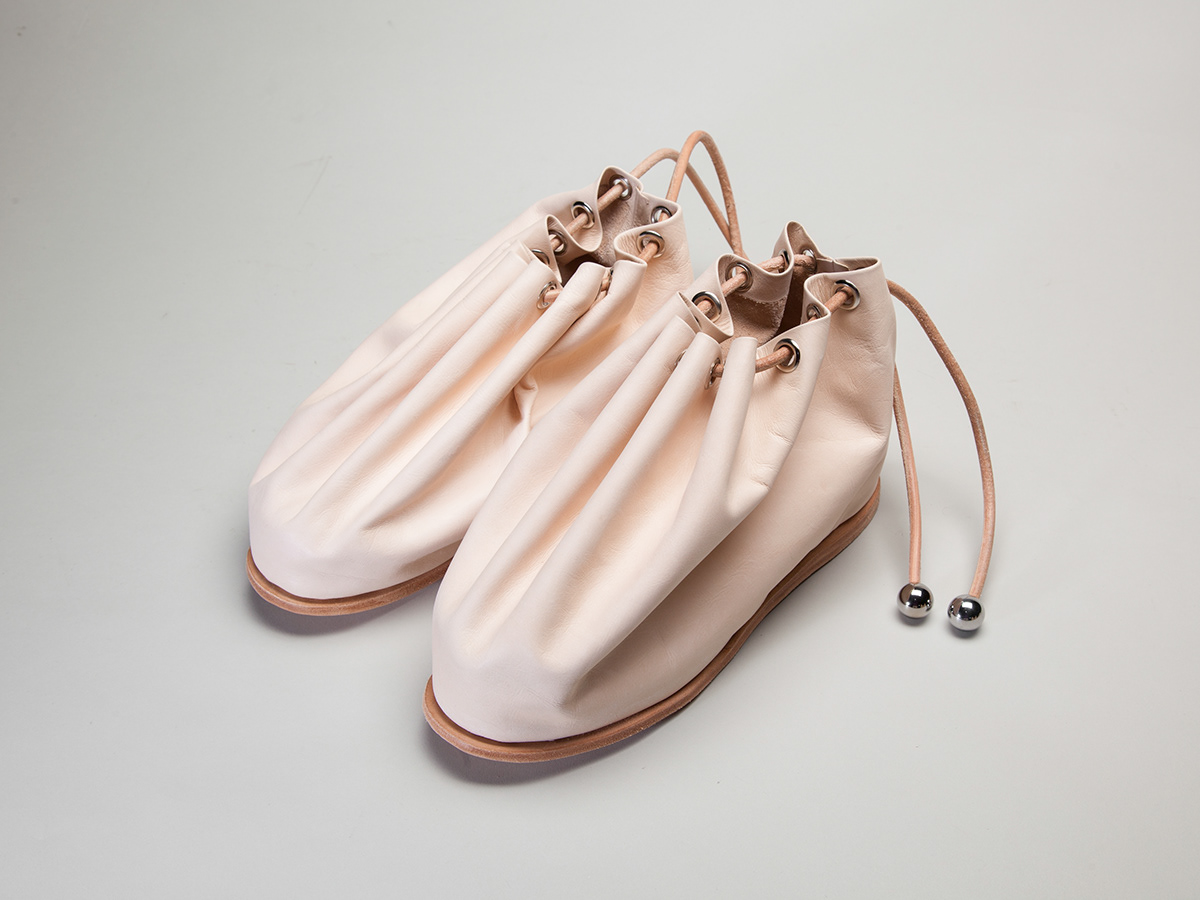
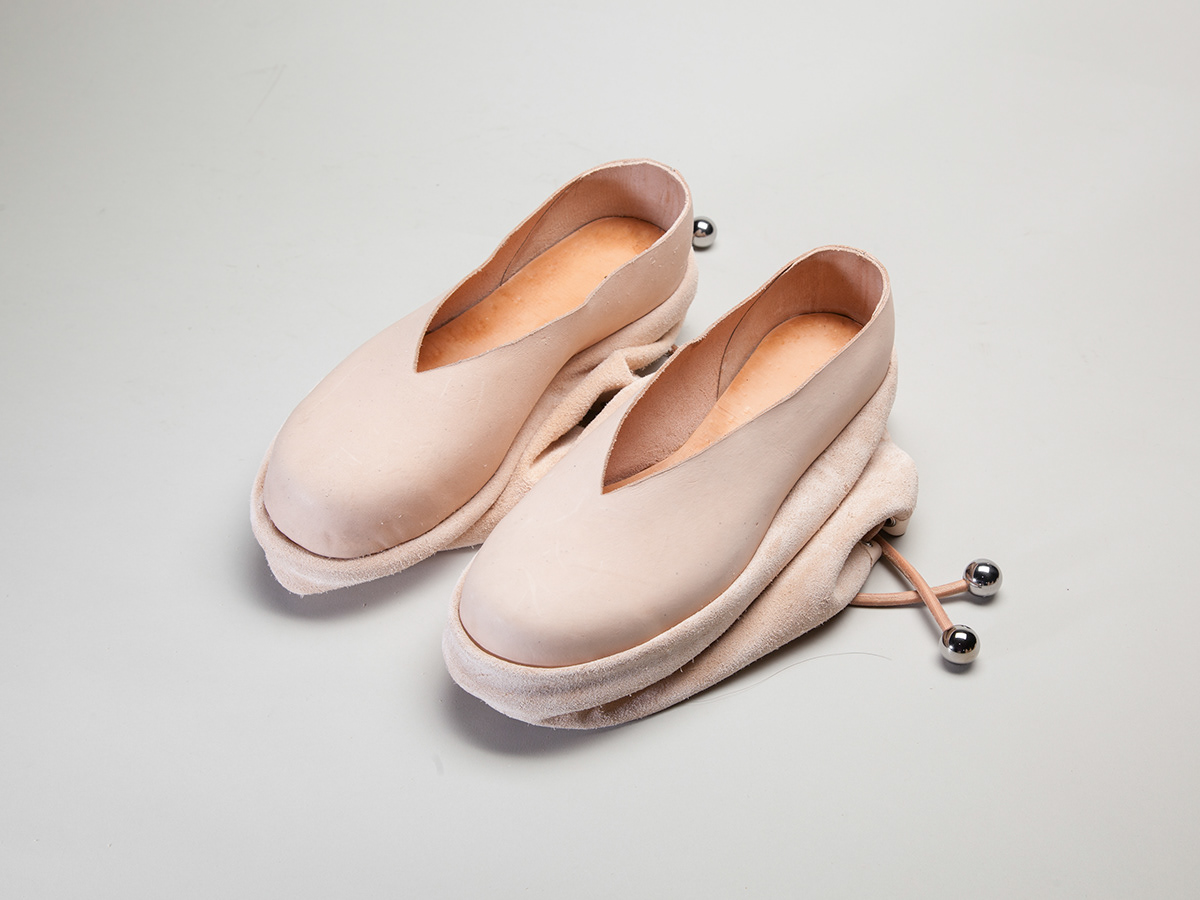

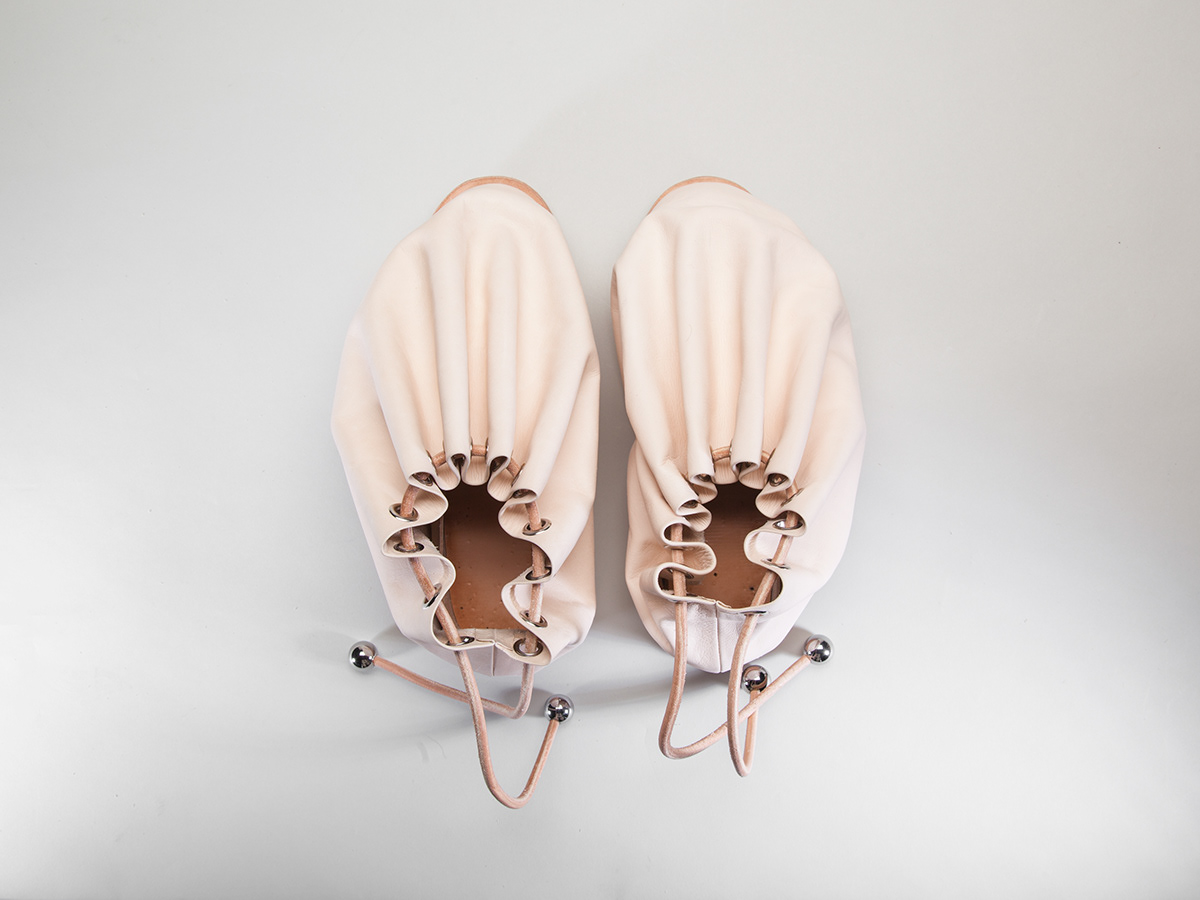





Sticky Fingers
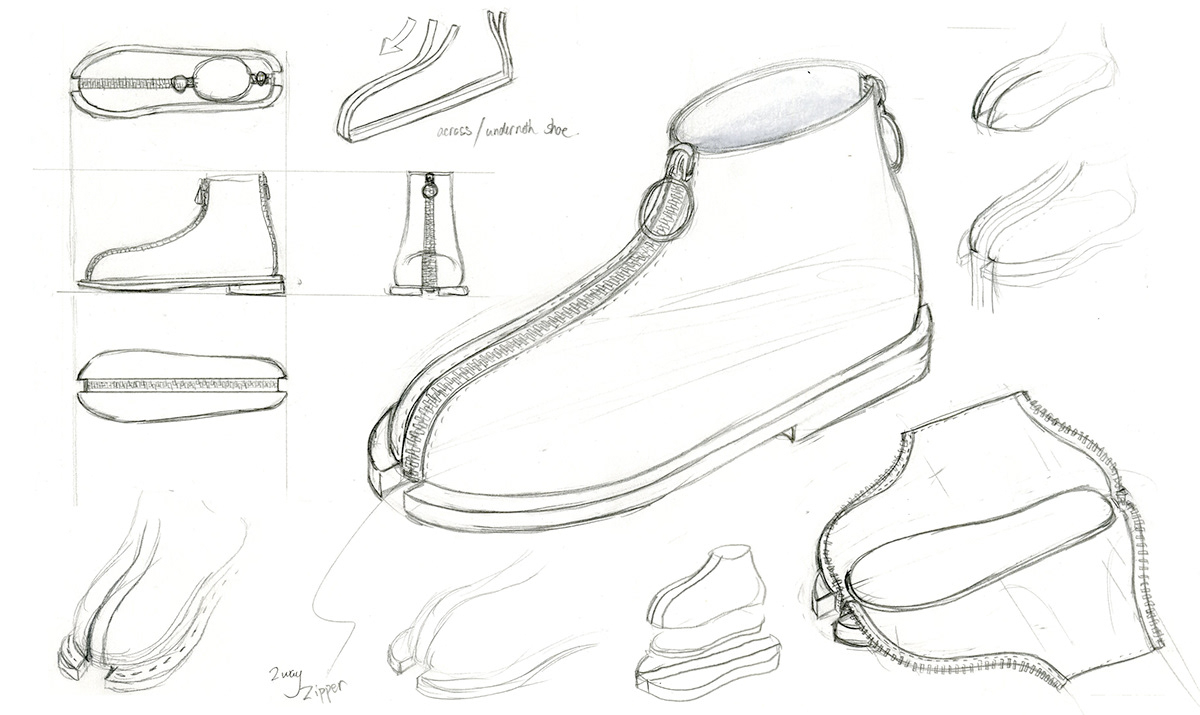
shoe zipped all the way around,
zip or unzip, front or back.
zip it close, hide inside.
zip it open, reveal yourself
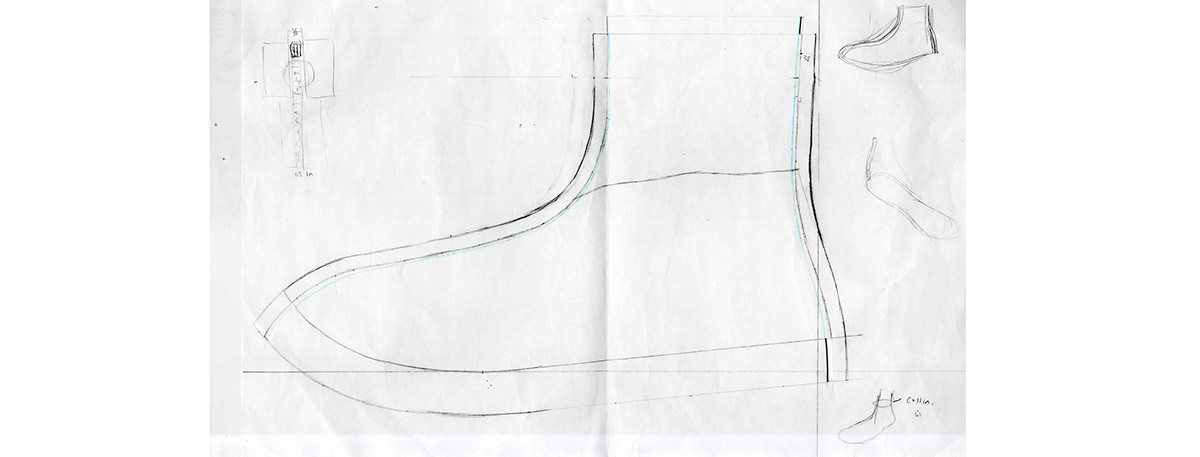
Patterning

Prototype was built to test and validate the zipper construction.
Two-way zippers go all around the entire shoe, from front to bottom to back
Zippers were dyed to match the leather color, sewn onto upper and cemented onto midsole.
Outsoles were split in half and attached to midsole, then trimmed and finished.

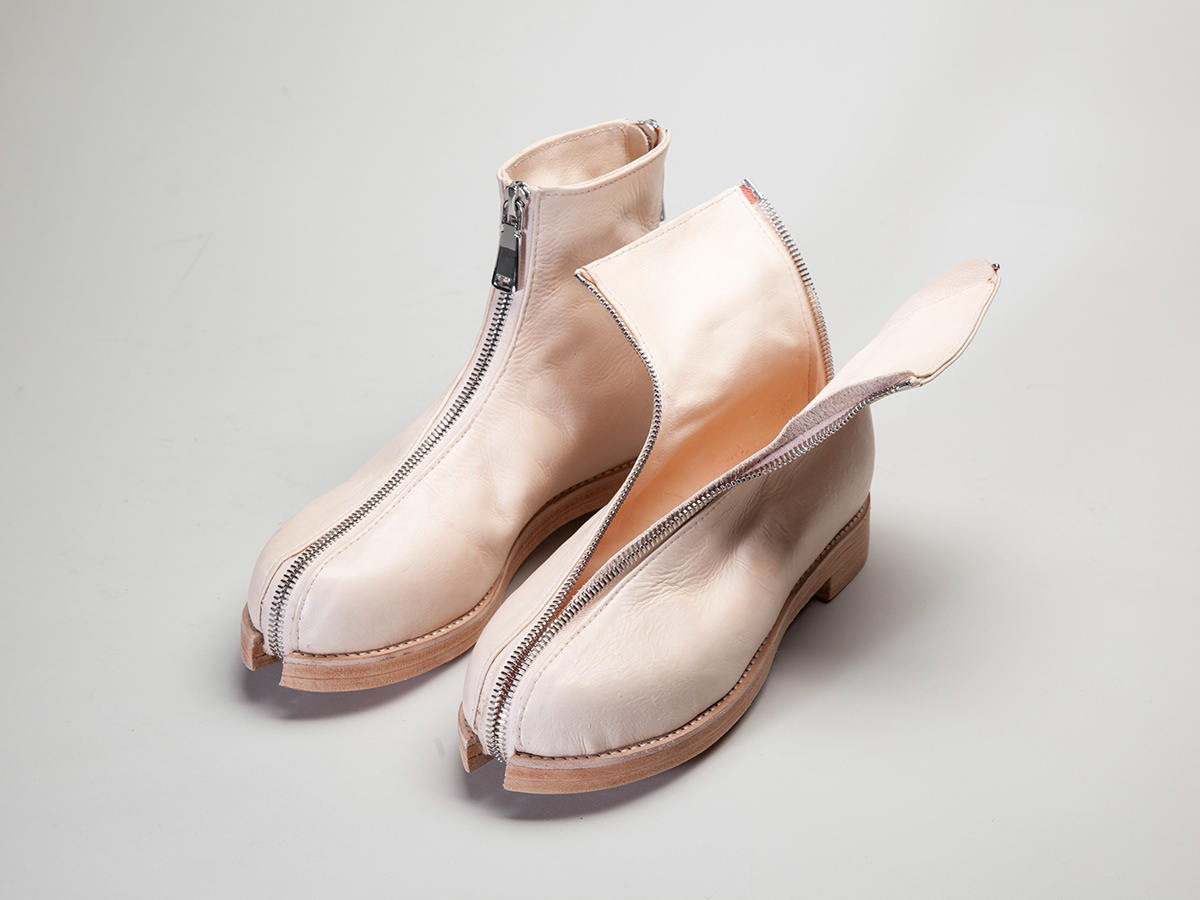





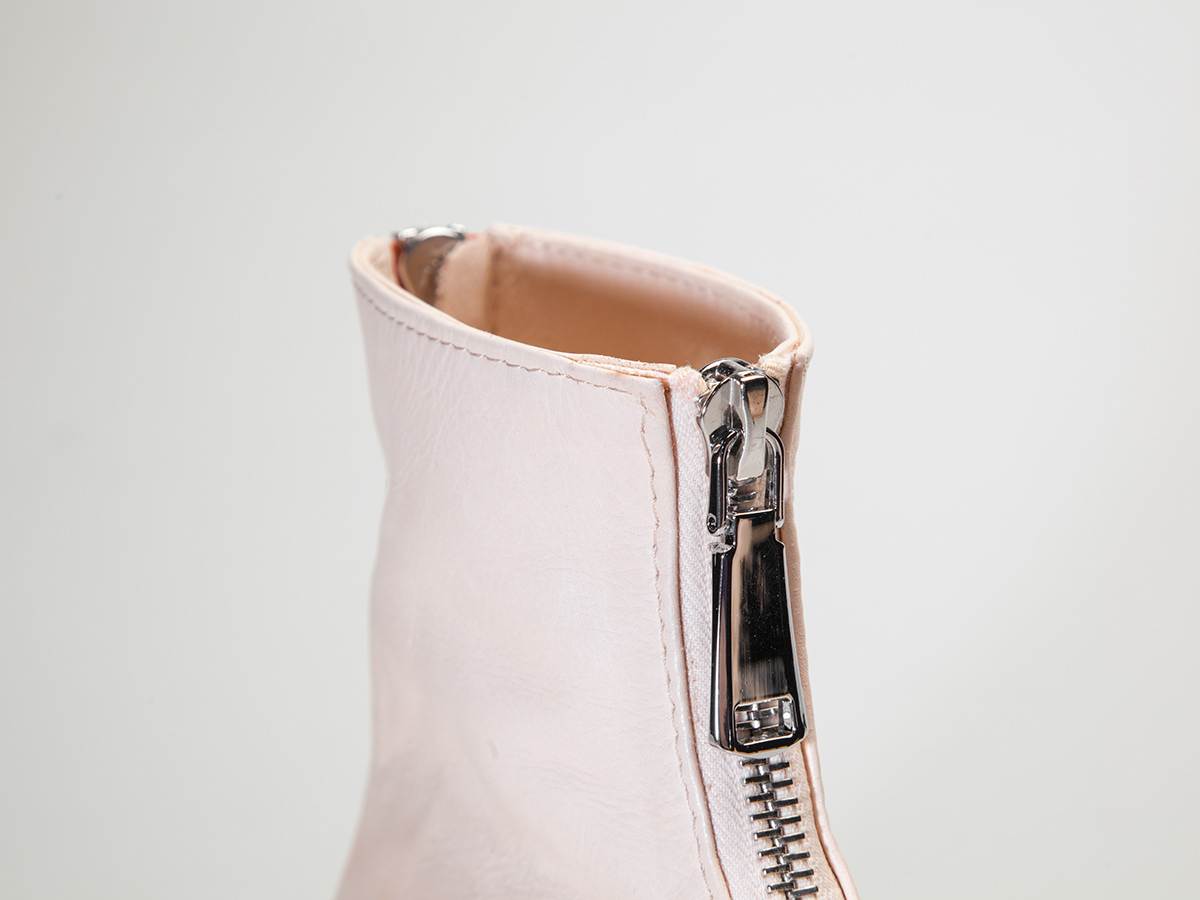
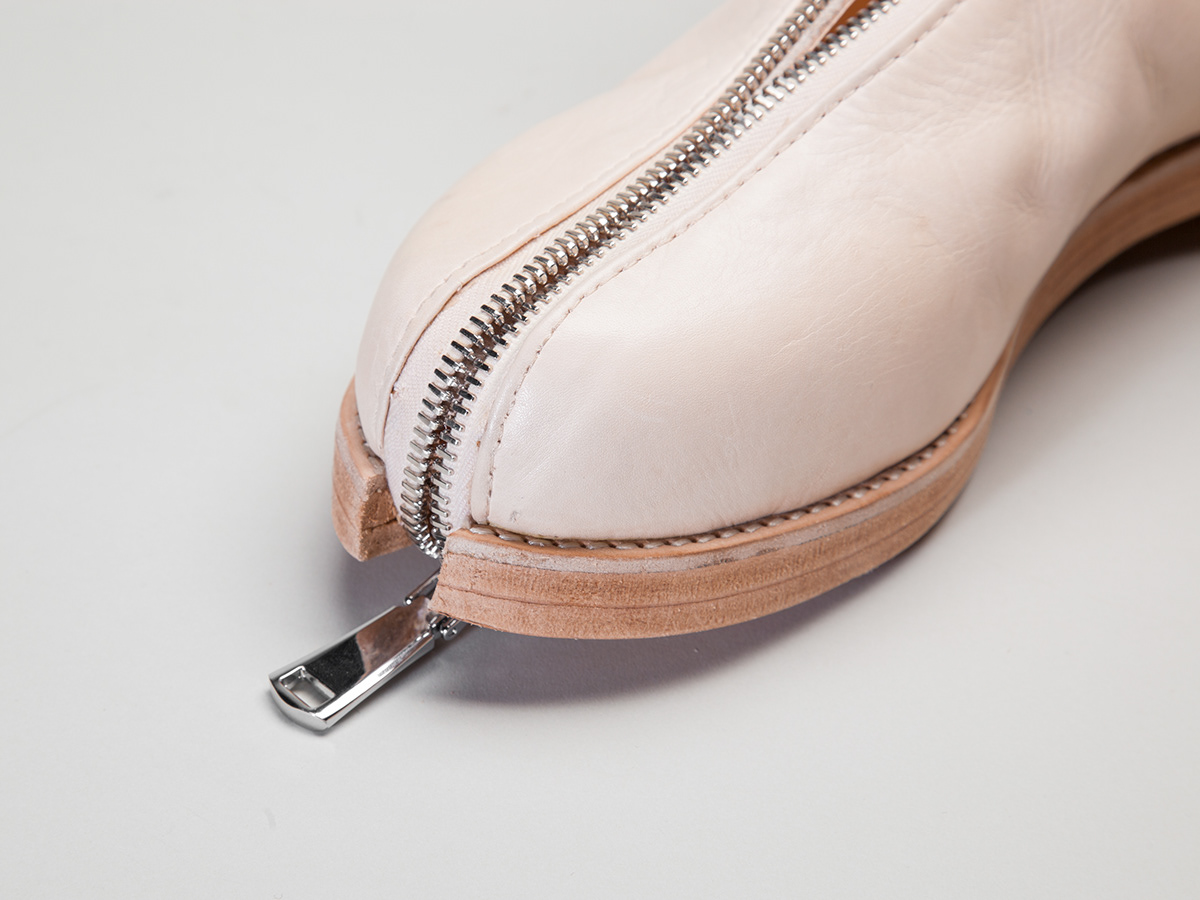
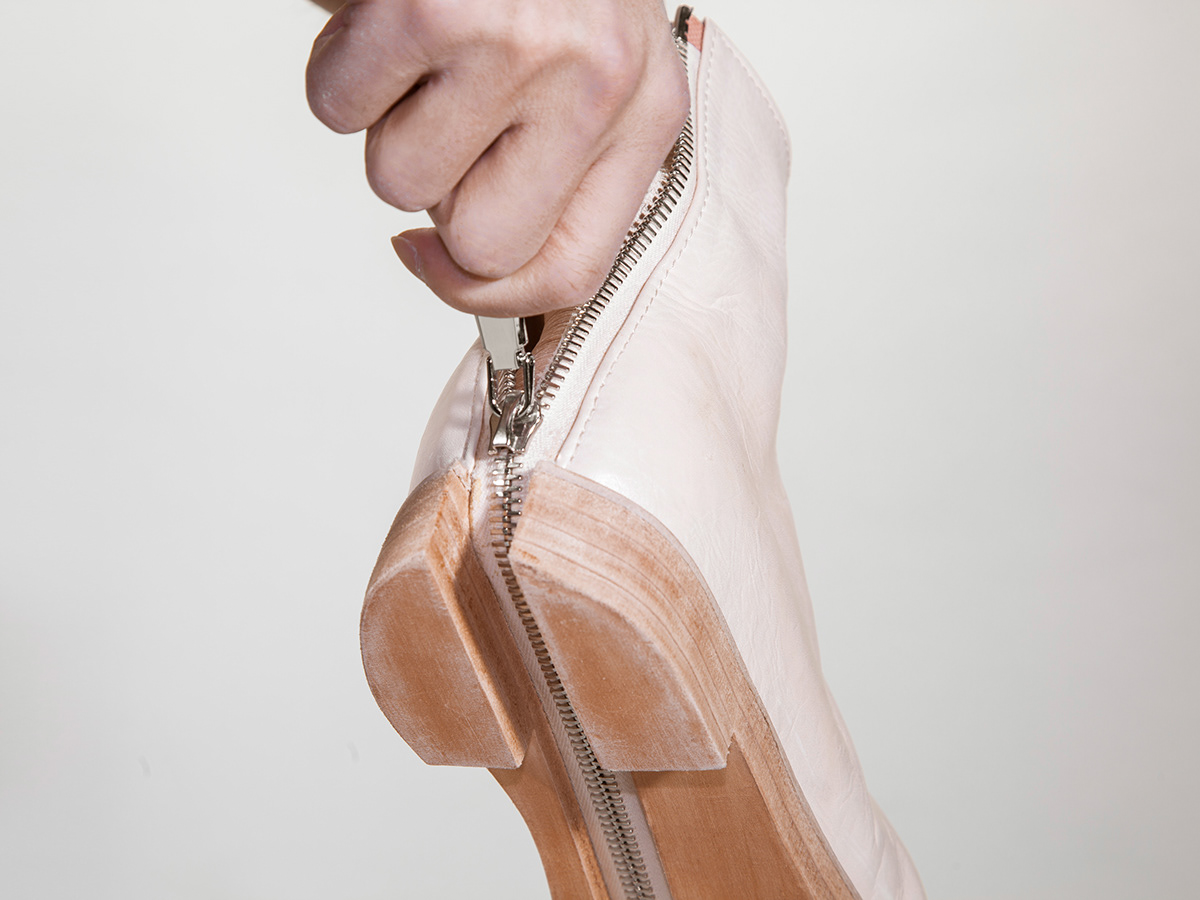

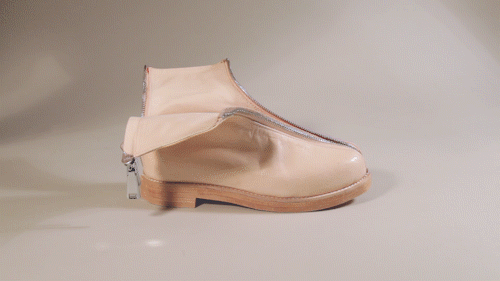
Osnap

Turn Osnap on, snap pieces to each other
None or All, or some, or one, up to you

Patterning
(The pattern was hand drawn then scanned and traced in CAD)

Pattern was laser-score onto the leather and then hand cut.
They are double layered and stitched together to increase thickness and stiffness.
Hollow snaps, EVA soles and lining upper were bought in shoe supply market in Guangzhou.
Linings were dyed to match color.
Shoe was welted and attached with EVA, which was then hand cut and sanded smooth.

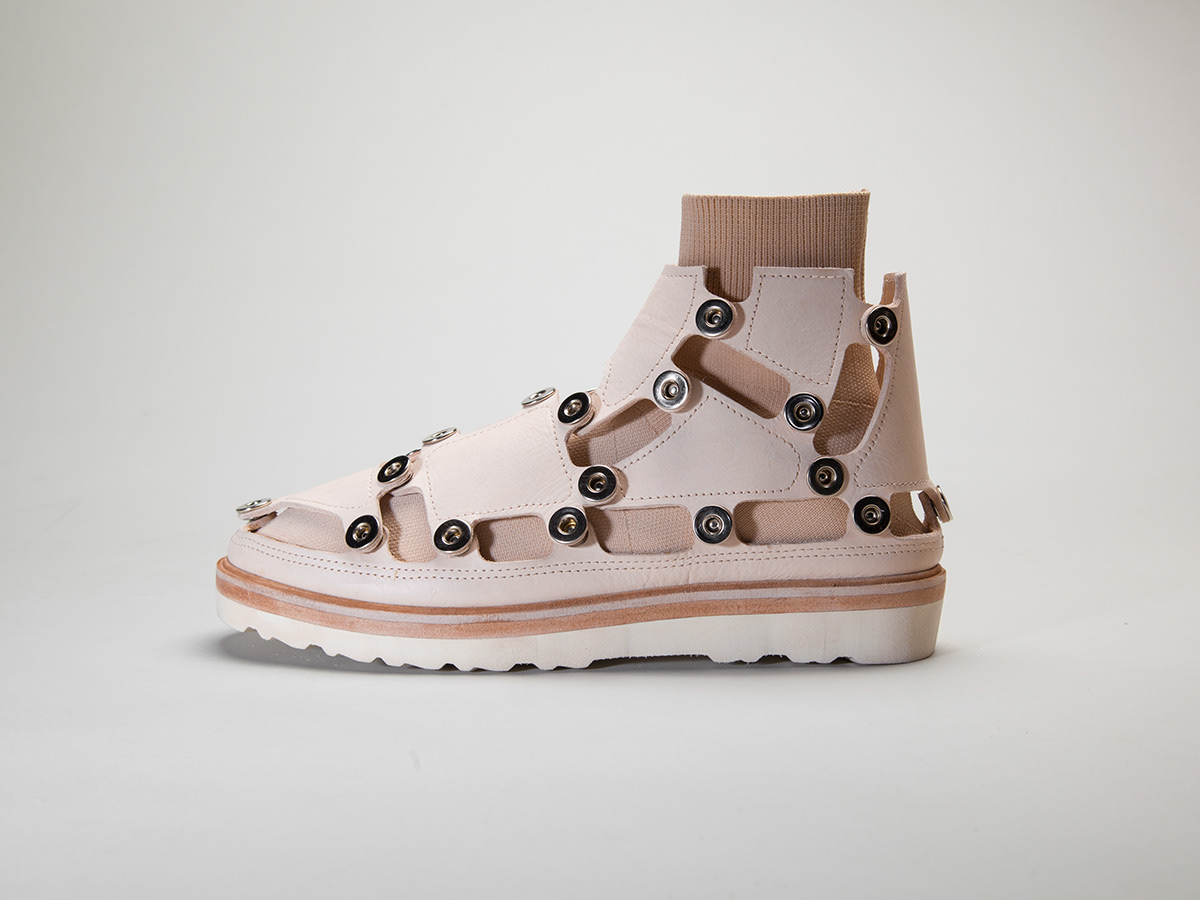



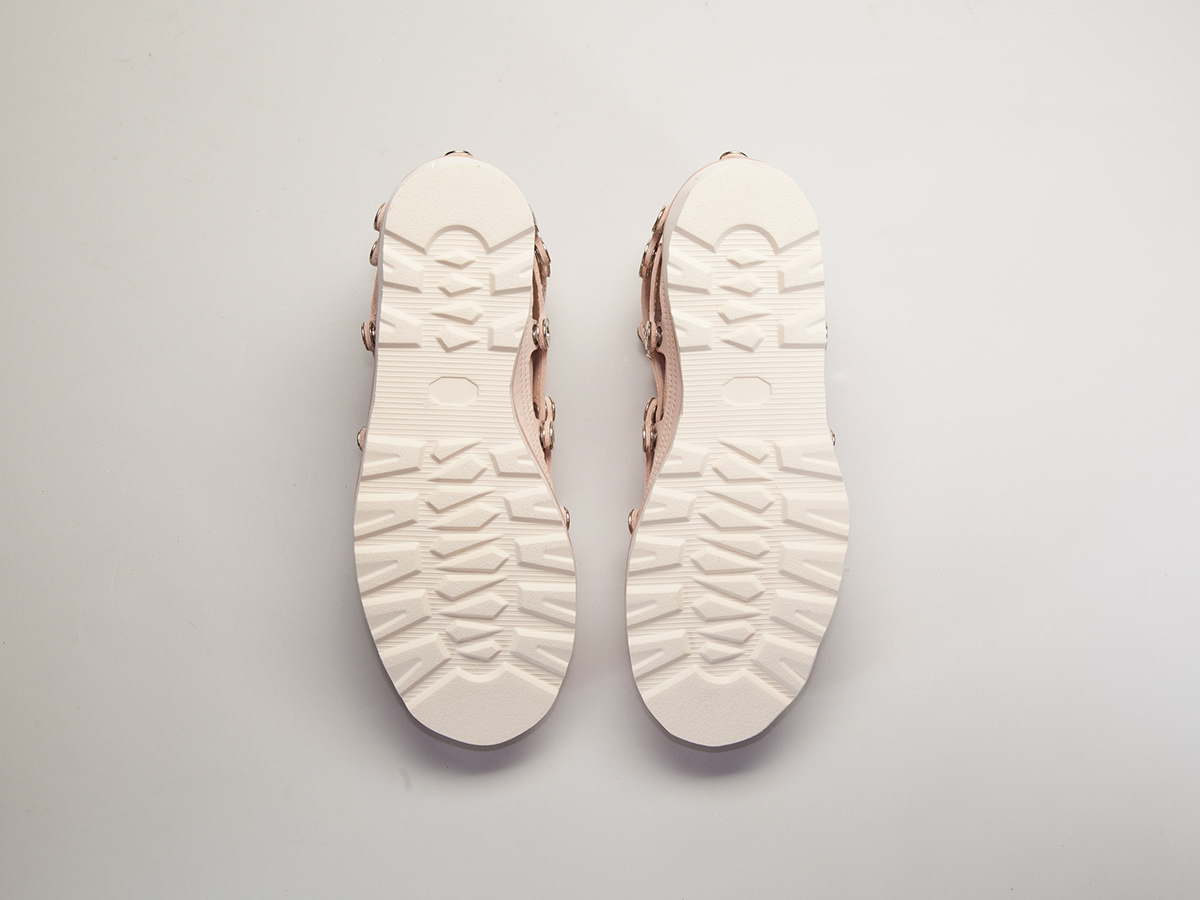
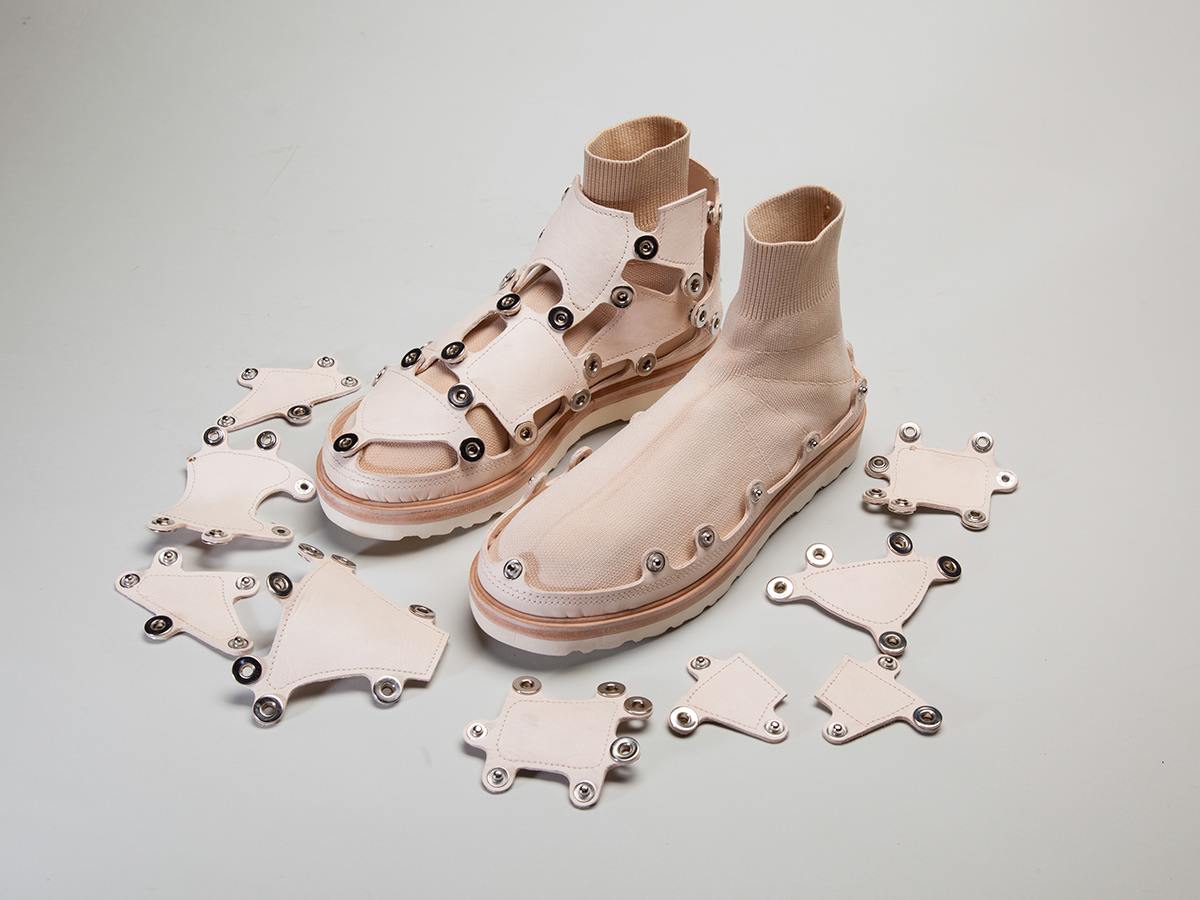






Other Concept Sketches



Family picture


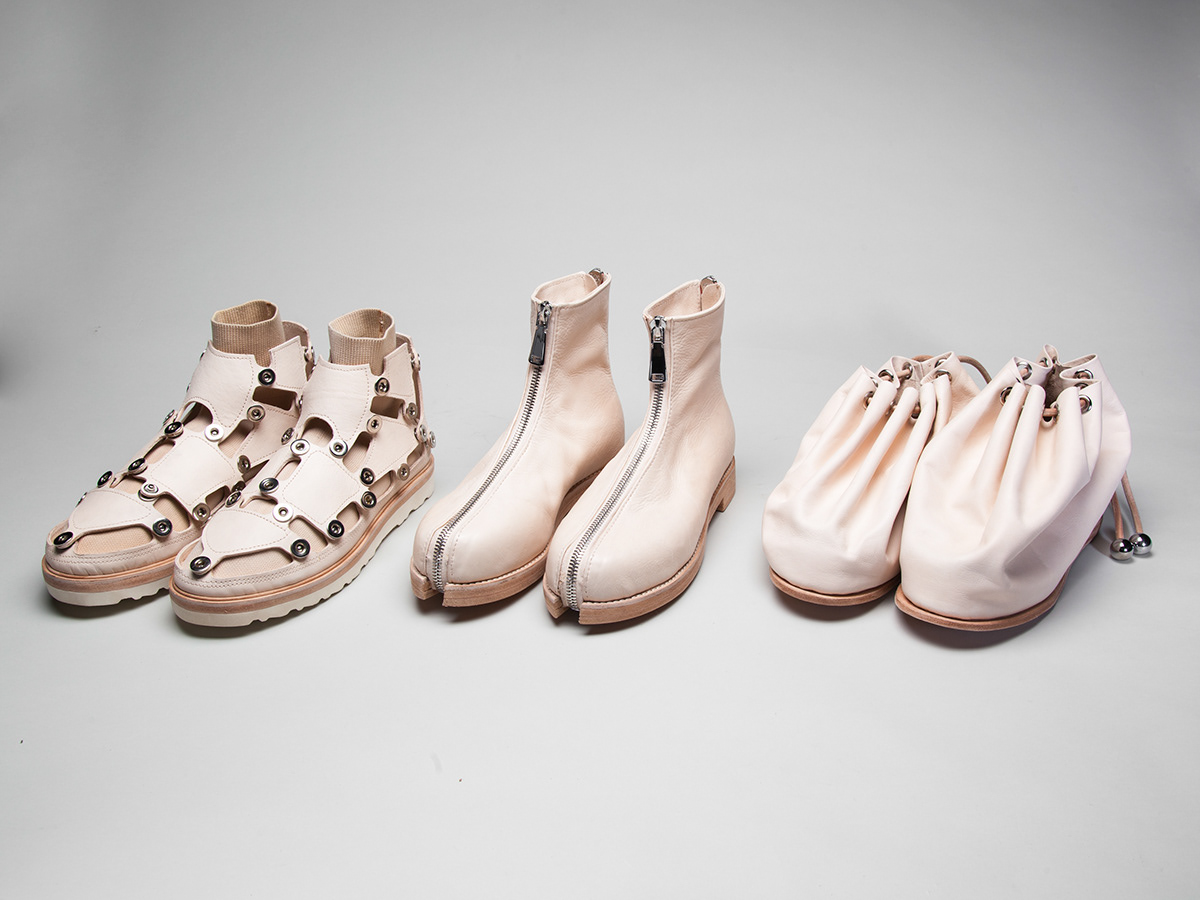

Thank you

